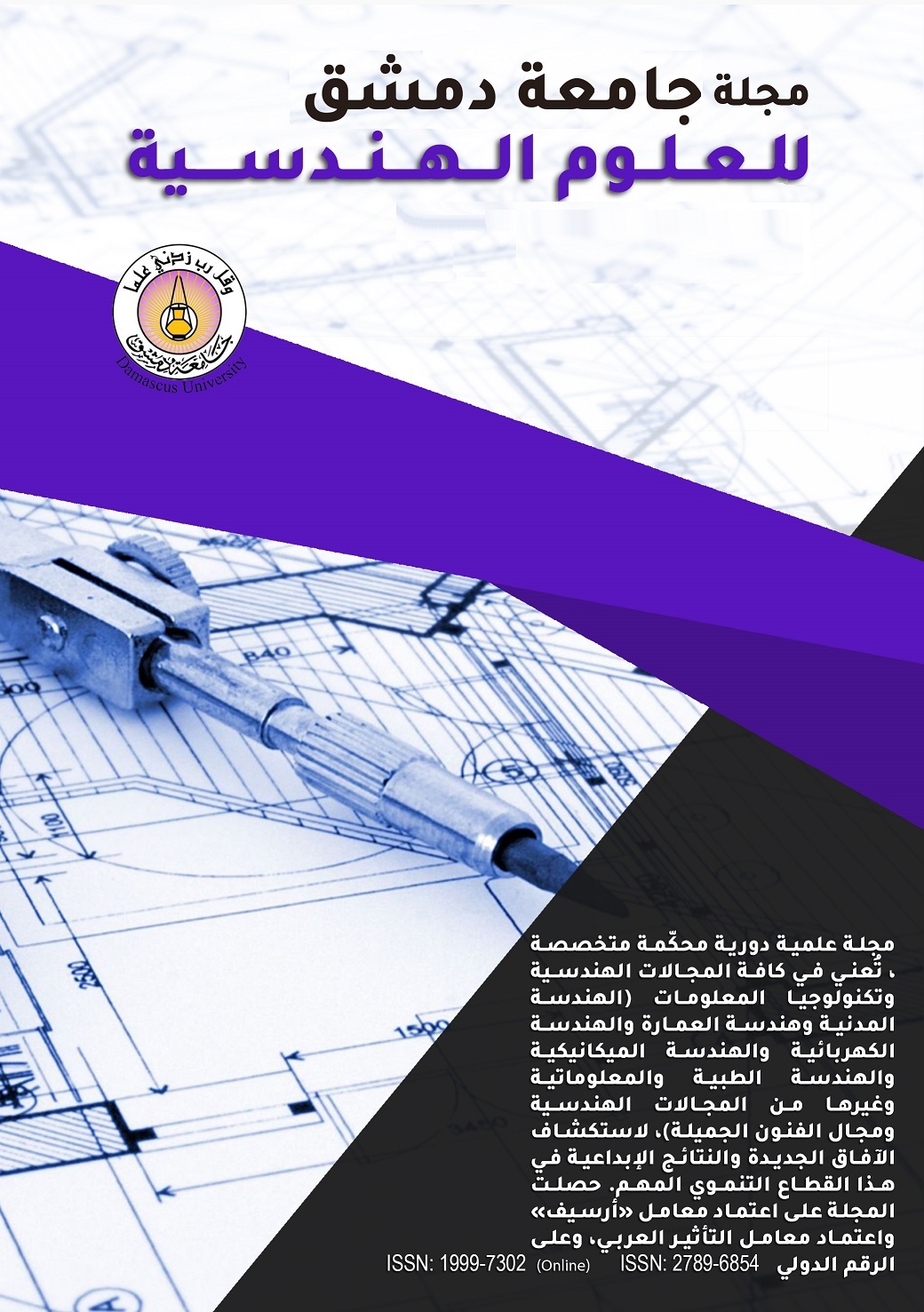دراسة الأداء الطاقي للجدران المنفذة بالتربة المدكوكة، دراسة مقارنة في منطقة القلمون بريف دمشق
الكلمات المفتاحية:
الإنشاء الترابي، التربة المدكوكة، نظام انشائي مستدام، فيزياء مباني، إنشاء مباني، ريف دمشق، محاكاة حرارية، أداء طاقيالملخص
تؤكد العديد من الفرضيات العالمية الحالية على ضرورة التوجه نحو الإنشاء بالتربة المدكوكة، لما لها من دور في مواجهة تحديات الطاقة الحالية، وقد جاء ذلك بالتركيز على قدرة المادة على الحفاظ على درجة حرارة داخلية مريحة. استناداً إلى ذلك، يعتمد البحث على تحليل وتوصيف الأساليب الممكنة في الإنشاء بالتربة المدكوكة، وإسقاط ذلك محليا على مبنى بمنطقة القلمون في ريف دمشق، ليتم العمل على تقييم كفاءة الطاقة باحتمالات التنفيذ الممكنة، ومقارنة النتائج مع كفاءة الطاقة الحاصلة في المباني المُشادة بالخرسانة المسلحة في منطقة القلمون.
يستعرض البحث بناء مبني بعدة طرق إنشاء: الأولى: تقليدية, حيث يُبنى بالكامل بتقنية التربة المدكوكة بحالتين (سماكة جدران 40 سم, سماكة جدران 60 سم), الثانية تقليدية محدثة: من جدران تربة مدكوكة معادلة ومعزولة (SIREWALL), أما الثالثة: فهي من الخرسانة المسلحة (والمغلف هو جدران مضاعفة من البلوك الاسمنتي مع فراغ هوائي وسطي). بهدف المقارنة بين أدائهم, تم إجراء محاكاة للسلوك الحراري لكل منها عن طريق برنامج المحاكاة الحرارية الديناميكية (Design Builder).

